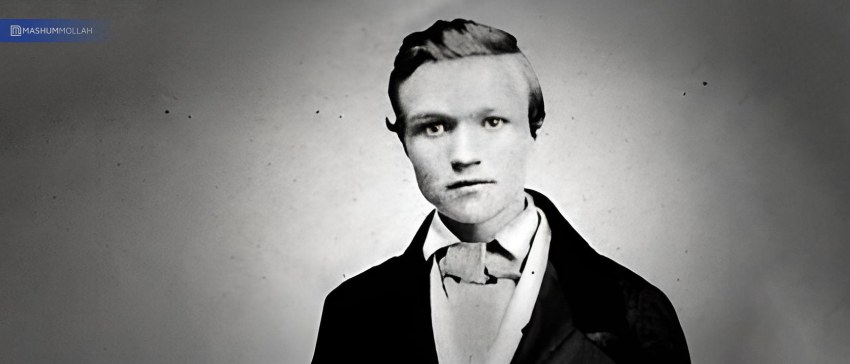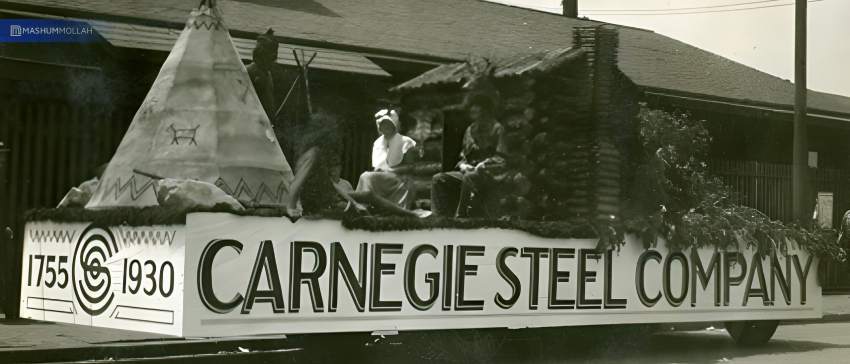Entrepreneurship
Andrew Carnegie Biography | Early Life | Education | Family | Business | Wealth

| Name: | Andrew Carnegie |
| Born: | November 25, 1835 |
| Nationality: | American |
| Age: | August 11, 1919 (aged 83) |
| Net Worth: | $475 million |
| Business: | Carnegie Steel Company |
| Spouse: | Louise Whitfield |
| Children: | Margaret Carnegie Miller |
“Think of yourself as on the threshold of unparalleled success. A whole, clear, glorious life lies before you.
Achieve! Achieve!”
– Andrew Carnegie
The words such as entrepreneur, industrialist, and philanthropist move around some people. Some people build upon one of these words, while others expand around all of them. Andrew Carnegie is someone who expands himself in all three of these spheres.
Carnegie was a dawn in the era of industrialists. He is responsible for the expansion of the Steel industry in the US. His philanthropic acts expanded beyond the US and reached Great Britain and the British Empire.
He donated around $350 million during the last 18 years of his life. Carnegie spent almost 90% of his life’s earnings on charity. No, Carnegie did not get his wealth served on a platter. He was born into a weaver’s family that had to share half of their ground room with a neighboring family. But, he became one of the most successful industrialists in the US.
Here is a small life story of Andrew Carnegie.
Who Was Andrew Carnegie?

Andrew Carnegie was an American industrialist known for expanding the American Stell industry during the late 19th C. During his era, there were no bigger philanthropists than Andrew Carnegie.
Carnegie was the captain of the industry who supported the workingman’s cause and worked for them. Carnegie built the structure of the American Steel industry. Carnegie started to work as a telegrapher at 12. However, after 12 more years, he had invested in railroads, railroads sleeping cars, oil derricks, bridges, and more.
He gathered more wealth by working as a bond salesman. He was responsible for establishing the Carnegie Steel Company, which he sold in 1901, making way for the U.S. Steel Corporation. Then he surpassed John. D. Rockefeller becomes the wealthiest person in the US.

Carnegie Spent the rest of his life working for the people. He donated to different types of institutions, helped build schools, libraries, and funded many scientific types of research. His contribution remained active within the US alone.
Early Life

Named after his paternal grandfather, Andrew Carnegie was born to William Carnegie and Margaret Morrison Carnegie in Dunfermline, Scotland. He grew up in a small house that had to share its main room with the neighboring family. Later, in 1826, the family moved to a bigger house.
The family moved to a larger house on Edgar Street after William, Edgar’s father, saw a rise in the demand for Damask. Andrew Carnegie studied at the Free School in Dunfermline. At an early age, Andrew Carnegie was inspired by his maternal uncle George Lauder, Sr., Who was also a political leader.

Andrew Carnegie’s uncle used to inspire him with Robert Burn’s writing and talk about famous historical heroes like Robert Bruce or William Wallace. During the industrial revolution, his father was going through difficult times. Andrew’s mother used to help her brother and sell potted meats to earn for the family. Later, when the family moved to Allegheny, both Andrew and his father got a job in the same cotton mill.
In 1948 when Andrew got his first job as a bobbin boy, he used to work 12 hours a day and 6 days a week. His starting wage was $1.20 per week.
You May Like To Know About Ratan Tata Biography
Entrepreneurial Achievements

Carnegie’s journey started with his early career with a wage of $1.20 per week. He started to work for a telegraph company as their messenger. This gave him enough experience, soon promoting him to a telegraph operator.
Later, he started working in a railroad company and became a superintendent at 24. Andrew Carnegie was not just a bright young man. He was also a hard worker and a voracious reader. Thanks to Colonel James Anderson, an Allegheny citizen, Carnegie discovered his passion for books.
Anderson had a small library that he left open for the working boys. These books nourished Carnegie’s intellect and provided him with essential life education. Carnegie used to walk with people who helped direct him toward his success. The first of such successes was his investment in the railroads.
(i) Rail Roads

Andrew Carnegie’s Boss, Thomas A. Scott, also a superintendent of the western division of Pennsylvania Railroads, fueled the spark of investment within Carnegie. Scott alerted Carnegie about the Adams Express Company’s shares. Andrew’s mother, Margaret Carnegie, helped him by mortgaging their house.
She obtained $500 to buy the shares. Carnegie’s observation was correct; they instantly started earning dividends after buying the shares. This opened room for Carnegie’s developing interest in different businesses.
He invested in Woodruff Sleeping Car Company. He was close to being 30 years old. Not only did Andrew Carnegie amass a massive amount of wealth, but he also started seeing business opportunities in different sectors, such as ironworks, railroads, oil wells, and steamers on the Great Lakes.
(ii) The Empire Of Steel

No other individual in the US owned such extensive steel and iron manufacturing industry in the US but Andrew Carnegie. He focused on the cheap and efficient production of steel. He adopted and improved the Bessemer process helping him manufacture steel at a cheaper cost.
Carnegie also bought the rival steel company named Homestead Steel Works and expanded his steel empire. This purchase contributed lots of resources to his empire. It included a comprehensive plant served by tributary iron and coal fields. There was a 684 km long railway also included with it.
Carnegie steel became the largest pig iron manufacturer by the end of the 1880s. He included other small to big iron manufacturers in the US. Pittsburgh Bessemer Steel Works, Braddock, the Union Iron Mills, the Keystone Bridge Works, the Union Mill (Wilson, Walker & County), the Frick Coke Company, the Hartman Steel Works, and many other companies came under Carnegie Steel.
(iii) U.S. Steel Corporation

Andrew Carnegie was getting old and was considering retirement at the age of 65. The year was 1901, and he was reforming all of his enterprises into a joint stock corporation.
At this point, an American banker and financial deal named John Pierpont Morgan foresaw the efficiency in Carnegie’s business and how it could generate profit for everyone, from the consumers to the workers.
He wanted to buy out Andrew Carnegie’s vast empire of steel. On March 2, 1901, the deal for the United States Steel Corporation concluded. This deal made the U.S.S.C the first-ever corporation in the world to have a market capitalization of $1 billion.
Reading Ahead Of Time
Andrew Carnegie was the founder of a giant steel company. But, the stronger foundation for the world he built was the libraries he helped set up. During the late 19th C and the early 20th C, Andrew Carnegie founded 2509 libraries worldwide. A massive 1679 libraries were built in the U.S. alone.

Andrew Carnegie spent $55 million of his wealth on Libraries alone. His huge contribution to the world of knowledge earned him the title of “Patron Saint of Libraries.” He believed that if people had access to books and the desire to learn, they could educate themselves.
Charity

A strong builder, an avid reader, and a giver – this is what Andrew Carnegie has identified himself as. Before Carnegie, philanthropy was just a noble did some wealthy people liked to carry out. However, Carnegie defined philanthropy as a moral obligation and that wealthy people should give away their fortune for the cause of the people and humanity.
He saw philanthropy as a way to invest in the future. For this investment, Carnegie devoted the last few years of his life to spending his time and wealth on education and world peace. He gave more than 2500 libraries to the world.

In 1911, Andrew Carnegie founded the Carnegie Corporation of New York “to promote the advancement and diffusion of knowledge and understanding.” Carnegie also established the Carnegie Dunfermline Trust in 1903 to improve his hometown.
In 1910, Andrew Carnegie founded Carnegie Endowment for International Peace. This non-profit organization worked on discussions, research, education, and more. He later funded different charitable projects to improve education, public welfare, and art.
Personal Life

Andrew Carnegie was a giver and a caring person. He did not want to take a wife during his mother’s lifetime. He only wanted to take care of her and stayed with her till her time came to an end. After his mother passed away, Andrew Carnegie married Louise Whitefield.
She was 21 years younger than Carnegie, who was 51 when they got married. In 1897, they had a daughter who Carnegie named after his mother, Margaret.
Frequently Asked Questions (FAQs):
When talking about Andrew Carnegie, we can barely stop answering questions. However, here are some popular questions and answers added to your aid –
Andrew Carnegie has done many philanthropic works. Here are some examples of them-
He founded the Carnegie Corporation of New York in 1911. His funding has helped the discovery of insulin and the process of dismantling nuclear weapons. Carnegie founded more than 2500 libraries worldwide. He also founded Carnegie Hero Fund to recognize and reward the heroic acts of people from peaceful walks of life.
Andrew Carnegie donated 90% of his wealth, leaving barely anything for the next generations. However, his fourth-generation family members have their self-made wealth and different white-collar jobs.
Yes, Andrew Carnegie has donated 90% of his wealth. Andrew Carnegie founded the Hague Palace of Peace building, which houses the World Court in the Netherlands. He also founded the Carnegie Endowment for International Peace. Andrew Carnegie had donated 90% of his wealth by the end of 1911.
Bottom Line!
Andrew Carnegie has done more for the world than we can express in words. The millionaire entrepreneur, a pioneer of generations of industrialists to come, wanted only one thing – world peace. Carnegie, a pacifist, wanted to give away his entire fortune.
However, he was only able to donate $350 million. One of his last efforts was to “hasten the abolition of international war.” This cause led him to found Carnegie Endowment for International Peace. Had he lived, he would have done more for the world than we can imagine.
Read More: